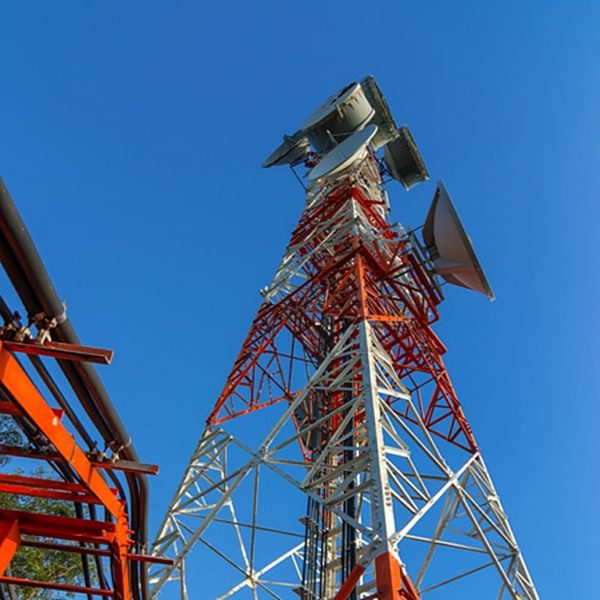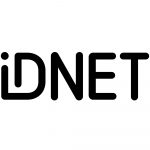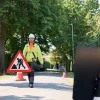Spectrum Policy Forum Looks to Future of TV Spectrum for UK Mobile After 2034

A new report from the cross-industry UK Spectrum Policy Forum (UKSPF), which was conducted in collaboration with consultancy firm Coleago, has examined what might become of the Ultra High Frequency (UHF) spectrum bands after 2034 (currently used for digital TV, PMSE and others). For example, if auctioned to mobile operators, the IMT600 band could raise up to £980m.
The Government and Ofcom are currently in the process of deciding the future of the UHF bands, which technically goes from 300MHz to 3GHz. But the new report is mostly focused upon what will happen to the sub-1GHz bands, primarily those that help to carry Digital Terrestrial TV (DTT / DTTV) services (470-694MHz). Over the next decade, it’s widely expected that DTTV services will slowly shift to broadband-based IPTV solutions, which could gradually free up some of this spectrum for other uses.
One key decision point will also come much sooner than this, at the end of 2026, when the BBC must decide whether to renew its MUX-B licence (this carries HD channels). “If the largest Public Sector Broadcaster (PSB) in the UK takes a step back from DTT it may encourage other broadcasters to review their plans and ultimately hasten a move towards IPTV,” although it remains unclear what approach the BBC will take.
Advertisement

However, the new report finds that “no single future scenario can satisfy all stakeholders“, necessitating “carefully balanced” policy responses. The report thus models five future pathways for DTT beyond 2034, ranging from targeted upgrades and spectrum efficiency improvements to a full switch-off by 2035 in favour of IPTV. Each case is assessed for its technical feasibility, impact on PMSE, and implications for future mobile spectrum availability (IMT600 band).
Key Findings:
➤ Digital Terrestrial Television (DTT) continues to serve nearly half of UK households, with an estimated 3.3 million homes relying on DTT exclusively. Despite shifts toward online content, DTT remains essential for vulnerable populations. The report cautions that reducing DTT could deepen digital exclusion, particularly among the elderly and low-income households.
➤ Mobile Communications, which account for approximately 0.75% of UK Gross Value Added, face mounting demand for sub-1 GHz spectrum. Without additional allocations, network congestion and poor rural coverage may exacerbate digital inequality and hinder economic development.
➤ Programme Making and Special Events (PMSE), a cornerstone of the UK’s creative sector (contributing over £124bn in GVA), depends on UHF for high-quality wireless audio essential to live events and broadcast production. Its localised and predictable spectrum usage presents opportunities for dynamic sharing solutions.
We should point out that freeing up the DTT bands for 5G and future 6G based mobile services would be of most benefit to rural areas and indoor signal quality, since such low frequency bands tend to travel much further than higher frequency ones and penetrate better through walls. The catch is that this won’t improve speeds (mobile broadband) much because there’s not a lot of spectrum frequency spare for carrying data in these bands.
However, the government will no doubt be keen to hear that allocation of the IMT600 spectrum via an auction could raise a significant amount for the exchequer. Based on Ofcom’s 2021 auction price of £280m for 2 x 10MHz of 700MHz spectrum, the auction of 2 x 35MHz of 600MHz spectrum could potentially raise an estimated £980m, assuming comparable market conditions and spectrum value (this is subject to a fair bit of uncertainty).
Finally, the report goes on to make several recommendations, which are aimed at minimising the related socio-economic disruption and optimising UHF spectrum usage.
Advertisement
Key Recommendations
➤ Spectrum Sharing – Dynamic allocation mechanisms between mobile and PMSE, particularly in rural areas, could enhance network capacity while preserving essential PMSE services.
➤ Targeted Infrastructure Investments – Expanding fixed broadband affordability and availability can reduce dependency on mobile networks mitigating coverage and congestion issues. For example, if there is no mobile coverage then fixed broadband with Wi-Fi can provide a substitute.
➤ DTT Modernisation and Public Support – If DTT is to be maintained (per cases 1 to 4) then investments in technological advancements and potential public funding mechanisms will need to be explored.
➤ International Coordination – The UK’s spectrum policy should align with global standards to maintain economies of scale in equipment manufacturing and cross-border interoperability.
Mark is a professional technology writer, IT consultant and computer engineer from Dorset (England), he also founded ISPreview in 1999 and enjoys analysing the latest telecoms and broadband developments. Find me on X (Twitter), Mastodon, Facebook, BlueSky, Threads.net and Linkedin.






















































I don’t watch terrestrial TV at all, but I do recognise its importance.
DVB is also *extremely* efficient in terms of spectrum usage… but equally, is the spectrum well spent on “QVC2”, “ITV4+1”, “U&DaveJaVu” … (the list goes on)
5G Broadcast is also interesting – I do wonder if the more ‘critical’ broadcast channels stay on DVB, the band gets slimmed down and relocated to mobile, and the less important channels go to 5G broadcast or IP-TV. Surely it will be cheaper to run ITV4+1 over the internet rather than relying on broadcast?
The target demographic for linear broadcast likely would have to pay to switch to iptv (good internet connection and up to date tv).
That said the longevity of TVs seems to have reduced drastically (many TVs lasting barely D years, even branded ones, at price points under £500, so part of the change may happen naturally. But if DVB is to reduce or radically change (e.g. all mux to DVB-T2) then the bandwidth purchasers need to pay people something towards upgrading (has happened in ther past)
Are these Roman TVs that are lasting D years? 500 doesn’t seem so bad.
My guess is that only the public service channels will remain on DTTV and they will be compressed down into UHF group A (Channels 21-34 470-582Mhz) probably across 3 muxes & transition to DVB-T2 (the BBC has already abandoned standard definition on satellite), there won’t be many TVs still in existence that can’t handle DVB-T2.
They not helping themselves, the new freeview app on new smart TVs doesnt have the same channel selection as over the aerial, which discourages migration.
I had a look at the tv guide on freeview website, then compared to the TV and a “lot” of channels are missing.
Maybe you’re looking on the wrong app, the new one is the Freely app.